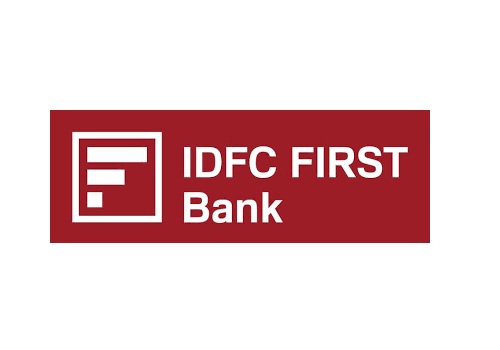RBI Proposes to Reduce Risk Weights on Infra Projects by CareEdge Ratings

Synopsis
* In an earlier publication titled “RBI Delivers Dovish Pause Along with Key Banking Announcements”, CareEdge Ratings shared its view on monetary policy announcements and banking announcements while briefing, touching upon RBI’s proposal of reducing risk weights for NBFCs lending towards high-quality operational infrastructure projects. The current note shares a detailed view of CareEdge Ratings on this proposal.
* This move aligns NBFC regulations more closely with banks, which enjoy lower capital requirements for highly rated assets. By differentiating between operational and under-construction projects, NBFCs can allocate capital more efficiently to de-risked assets, thereby lowering financing costs and enhancing lending capacity. Although NBFCs currently maintain strong capital buffers, the change is expected to enhance future competitiveness and capital efficiency.
* It encourages NBFCs to maintain high asset quality, with incentives potentially tied to external credit ratings and/or performance metrics (like favourable DSCR, sustained revenue, etc.). The proposal complements new project finance guidelines, effective as of the same day (CareEdge Ratings’ article: RBI’s guidelines on Project Financing – Balancing Infrastructure Stakeholders’ Expectations), promoting consistent risk management across banks and NBFCs. With NBFCs showing growth in infrastructure lending, especially in the power sector, the measure supports long-term funding from institutional investors and strengthens the overall infrastructure financing ecosystem.
Announcement
The RBI has proposed reducing the risk weights applicable to lending by NBFCs to high-quality operational infrastructure projects. Infrastructure projects that have commenced operations typically exhibit lower risk compared to those under construction. Recognising this risk differential, the existing capital adequacy norms permit NBFCs to assign a lower risk weight to operational projects under Public-Private Partnerships (PPPs). To further rationalise the risk weights for infrastructure lending by NBFCs in line with the nuanced risk profile of operational projects, a principle-based framework has been introduced. The framework aims to align risk weights with the actual risk characteristics of operational infrastructure projects, thereby promoting more accurate risk assessment and capital allocation. Draft regulations in this regard shall be issued shortly for public consultation.
Impact Assessment
Regulatory Realignment for Infrastructure Finance
The recent proposal reflects a shift in regulatory thinking, bringing NBFCs closer to banks in how they’re treated when financing infrastructure projects. At present, banks enjoy lower capital requirements when lending to highrated, low-risk projects. NBFCs, even when financing similarly safe infrastructure assets, don’t always get the same benefit. This creates an uneven playing field.
Some NBFCs, such as Infrastructure Debt Funds (IDFs) and Infrastructure Finance Companies (IFCs), already apply a lower risk weight (50%) to loans backed by strong tripartite agreements, but not to other wholesale lending NBFCs. The proposed changes aim to fix this gap, which could reduce the cost of capital for completed infrastructure projects and encourage NBFCs to lend more in this space.
This move aligns with the RBI’s updated project finance guidelines that came into effect on October 1, 2025. These guidelines introduce stricter standards for projects that are still under construction. While the initial draft suggested a 5% provisioning requirement, the final version has eased it to 1%.
Improved Capital Buffer
NBFC-IDFs and NBFC-IFCs are currently well-capitalised, with an average Capital Adequacy Ratio (CAR) of around 27% and gearing of about 5x as of March 2025—comfortably above regulatory requirements. Because of this strong position, the immediate impact of the proposed changes may be limited. However, the new measures will further strengthen their capital base, allowing these institutions to scale up lending in the future, especially in the infrastructure sector.
Reduction in Pricing; Boosting NBFC Competitiveness in Infrastructure Lending
The proposed regulatory changes aim to lower the cost of financing for infrastructure projects by reducing the risk weights applied to operational assets held by NBFCs. This means NBFCs would need to set aside less capital for these loans, improving their capital efficiency. As a result, they may be able to offer lower interest rates to project developers.
In Q1 FY2026, infrastructure lending by banks declined slightly (by 0.46% quarter-on-quarter), while NBFC-IFCs focused on the power sector grew their asset base by ~2%. This contrast highlights how NBFCs are becoming more competitive in infrastructure finance. The proposed changes are expected to further strengthen their position compared to banks.
For long-term infrastructure projects, even a slight reduction in borrowing costs can result in substantial savings over time. Since NBFCs can raise long-term funds from institutional investors, such as pension and insurance companies, they are well-positioned to match long-term assets with long-term liabilities. Enhancing their competitiveness could help increase the overall availability of funding for the infrastructure sector.
High-Quality Assets and Risk Management Regulation
The specific criteria for "high-quality" are expected to be articulated in the upcoming circular; however, they are likely to be linked to either external credit ratings or strong performance indicators, such as sustained revenue generation, favourable debt service coverage ratios (DSCR), and compliance with the new project finance guidelines. While the exact new percentage remains a data gap at present, Care Ratings Limited expects the target risk weight for the highest-rated assets could drop substantially.
This incentive structure, which ties the lowest risk weight to "high-quality" assets, creates a fundamental inducement for NBFC-IFCs to maintain pristine asset quality, rewarding prudent risk management and encouraging a focus on stable, performing assets. Furthermore, the criteria defining a "high-quality" operational infrastructure asset are highly likely to be aligned with the new, comprehensive project finance norms applicable to both banks and NBFCs, which took effect on October 1, 2025. This synchronisation will minimise regulatory arbitrage and mandate consistent risk management practices across all regulated entities involved in infrastructure lending.
Above views are of the author and not of the website kindly read disclaimer



.jpg)




















